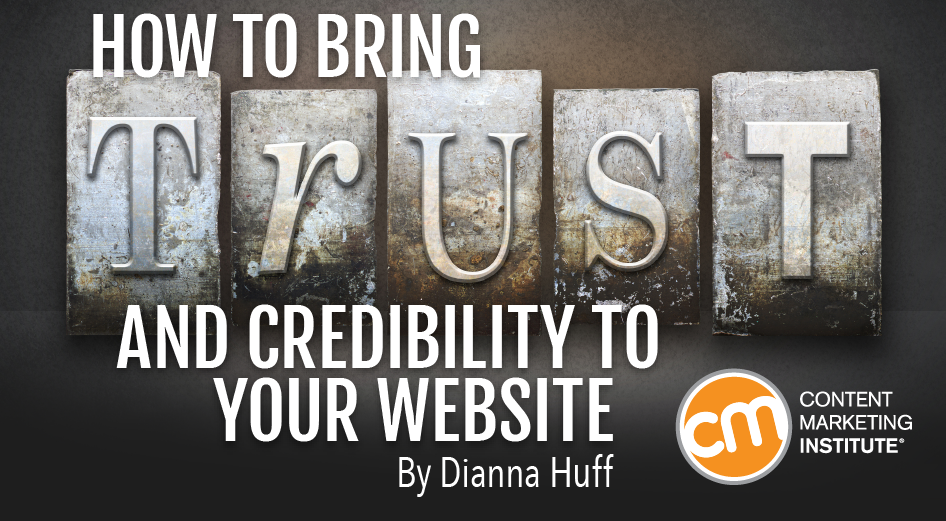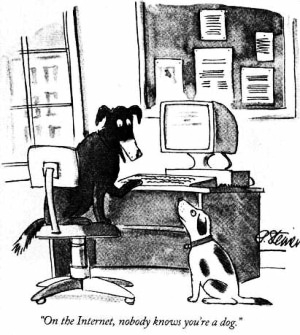What if I told you that the lack of a seemingly insignificant content asset on your B2B vendor website will potentially cause 44% of your visitors to leave?
And, what if I told you that this same piece of content was deemed a “must have” or “very important” to 90% of buyers who need it to move forward with an inquiry, request for quote, or trial offer?
Would you include this content asset? You bet, right?!
Yet, it’s this one asset that 51% of survey respondents indicated was most lacking on vendor websites.
What is it? Thorough contact information.
This finding is part of the 2015 B2B Web Usability Report by Huff Industrial Marketing and KoMarketing.
The importance buyers place on credibility and trust with regard to vendor websites was woven throughout the survey responses, including the content assets that establish credibility.
In addition to thorough contact information, respondents indicated that research reports (42%), about info/team bios (40%), client lists/testimonials (38%), and case studies/white papers/articles (37%) were either “must have” or “very important” with regard to establishing a vendor’s credibility.
I focus on three of these website content assets to which marketers may not give adequate attention: contact information, About pages, and client lists.
Contact information increases trust and inquiries
One of my favorite cartoons is Peter Steiner’s New Yorker cartoon that shows two dogs at a computer monitor with the caption reading, “On the Internet, nobody knows you’re a dog.”
The cartoon is still relevant even though it’s 22 years old. Today, anyone can put up a website and be in business in less than 24 hours. The speed at which someone can create a seemingly robust website makes it really difficult to know who you can trust, especially in these days of data breaches, phishing, and other nefarious activity.
Think of contact information as a subtle cue, similar to the way we assess people upon first meeting. When a company doesn’t share its physical address and other contact information, and forces contact through a form, you as the potential prospect have a sense of unease:
- Who is behind this company?
- Where is it located?
- If I have a problem, how will I reach someone?
Basically, you want to know if the company is legitimate or if it’s the Internet equivalent of a dog. By placing phone number, email address, and a physical address on a website, a vendor helps overcome some of these concerns – and thus establishes the beginning of trust.
Located in Belgium, PieSync provides a software app that syncs applications. Because it has clients all over the world, PieSync made a strategic decision to list the various ways prospects and customers can reach a “live human” – chat, email, or visit the office. I’ll definitely keep this in mind should I visit Belgium!
Contact information doesn’t have to be relegated to the Contact Us page. Depending on your company and its size, you can add a phone number and/or email link in the header of each page. If you’re a large enterprise, consider adding “Contact Us” to the main navigation versus burying it in the footer. When “Contact Us” is buried, it’s harder for people on mobile devices to find and access it.
About pages and team bios confer credibility
In The New York Times article, Quenching Consumers’ Thirst for Authenticity, James H. Gilmore, author of Authenticity, stated, “A sense of authenticity reinforces trust in what is real in an increasingly staged, contrived, and mediated world.”
Authenticity also is a tangible driver of revenue. In its 2014 global study, The Age of Authenticity, Cohn & Wolf revealed that 63% of consumers would buy a brand they perceived as authentic over its competitors.
The MediaPost article, Unlocking the Power of Authenticity with Millennial Consumers, discusses how authenticity and its allied trait of trustworthiness are two of the top brand attributes sought by millennials before they decide to hand over their money.
Yet, many companies still rely on standard-issue boilerplate when it comes to their About page – a practice that does little to show a company’s authenticity or build trust and credibility.
Boilerplate originates from a bygone era
According to Wikipedia, boilerplate is a print industry term dating back to the 1900s when plates of text were stamped in steel and ready for printing and widespread reproduction and distribution of advertisements or syndicated columns.
Boilerplate has also come to mean the standard one or two paragraphs used at the end of press releases to describe a company and its products.
By using boilerplate on an About page, which many B2B companies do, I’m afraid to say, a vendor is throwing away a prime opportunity to tell its company story, show its authenticity, and by extension, build trust with buyers.
Moz’s About page is one example of how to tell a company story in a fresh and unique way. Instead of straight text, the company uses a timeline with pictures and quick captions, beginning with a photo of Rand Fishkin and his mom, Gillian, co-founders of Moz. Talk about authentic. If you can’t trust mom, who can you trust?
You don’t have to be Moz to tell your company story in a unique way. Kays Engineering, a deep-hole-drilling-machine manufacturer based in Marshall, Missouri, uses gritty black-and-white photos and text to tell its company history.
For some reason, companies often post a picture of their building on the About page – a terrible waste of opportunity and space. As I tell my clients, “People take people out to lunch, not buildings, so show the people inside the building.” You can do this through bios and other engaging content.
The Food Law Firm team page lists the firm’s attorneys. What I like about this page is that each bio includes a photo, contact information, social icons, and a link to the person’s full background page. I also like that the attorneys look friendly, casual, and approachable.
Click on the blue Bio box, and a new page opens to the full bio, written to help prospective clients get to know the people behind the firm. Jason Foscolo’s bio, for example, states:
After separating honorably from active duty in 2010, Jason pursued his passion for all-things edible by attending the University of Arkansas School of Law LL.M Program in Agricultural and Food Law, the only program of its kind in the United States.
The About section of a website doesn’t have to be limited to a brief “About Us” page or team bios. You can also include a press room, charities supported, awards, events, videos, and testimonials.
Rethink Robotics, the makers of the Baxter collaborative robot, combines video and testimonials with a collection of engaging video testimonials from customers.
Client lists open doors in a way other content doesn’t
For some companies, listing the clients you work with isn’t an option. You’ve signed non-disclosure agreements or the work you do is sensitive and your customers simply don’t want their names posted.
But, barring these restraints, posting a client list builds credibility and trust, especially if you have A-list clients or well-known companies in your niche. A prospective buyer comes to your website and sees that you’ve worked with Recognized Brand Name A, B, and C, and automatically assumes that you know what you’re doing.
Marketing automation company Marketo states on its Customers page that it has “thousands of customers of all sizes” and it’s right. I captured a screen shot of the page, but it was so long, I couldn’t include it all.
You can list clients on one page the way Marketo does or include client logos on page footers. Or, follow Basecamp’s lead and make a partial client list part of the home page itself.
As with posting thorough contact information, bios and client lists add those subtle cues that help build trust.
Key takeaways for content marketers and vendors
As you can see, although seemingly insignificant when compared to other types of content assets, thorough contact information, About pages, team bios, and client lists are important to establishing credibility and trust in the eyes of prospective buyers.
Every company has a unique story to tell, and as Joe Pulizzi says in the Who is CMI? video on the CMI About page, it’s up to marketers to “create valuable, compelling, relevant and interesting information.”
When creating contact, about, and client list content for your website, give it the same amount of time and attention you pay to landing pages, white papers, video, and other types of content. Instead of falling back on a deadly dull boilerplate, have some fun and be creative.
Not only will you help prospects decide to do business with you, but you’ll also be a better marketer.
Need more inspiration or techniques to be creative and improve your brand’s content marketing effectiveness? Make plans today to attend Content Marketing World 2015 this September. Register now and use the code CMI100 to save $100.
Cover image by Joseph Kalinowski/Content Marketing Institute











